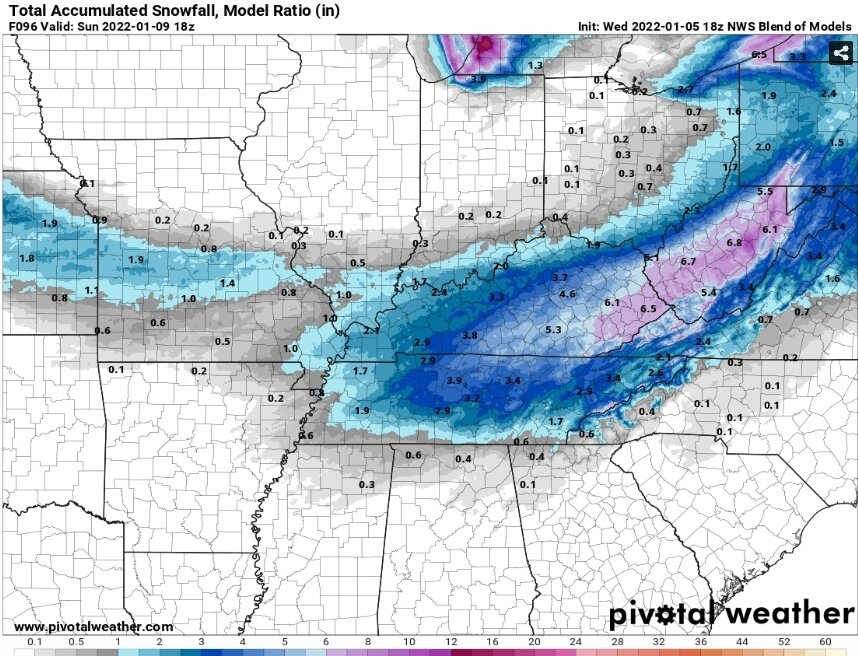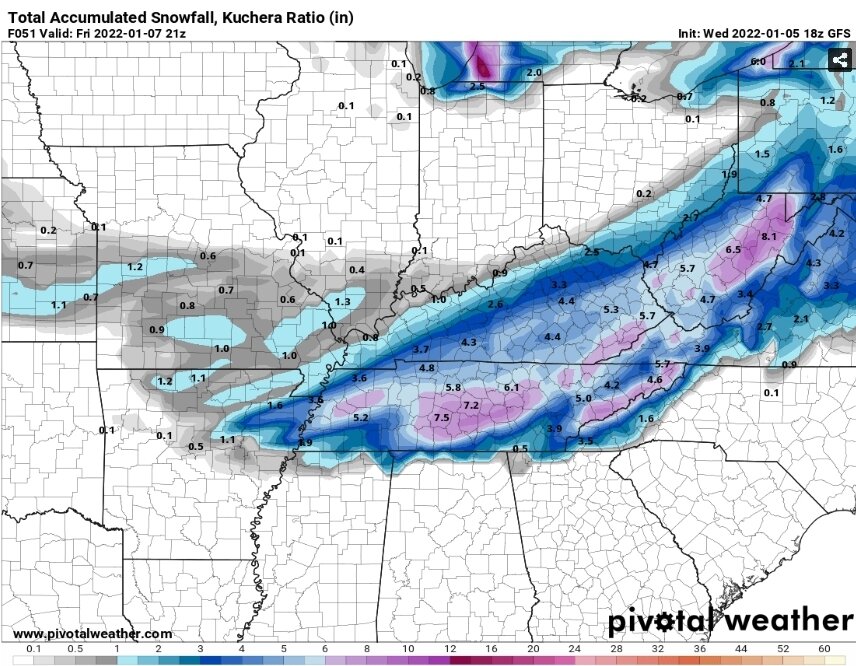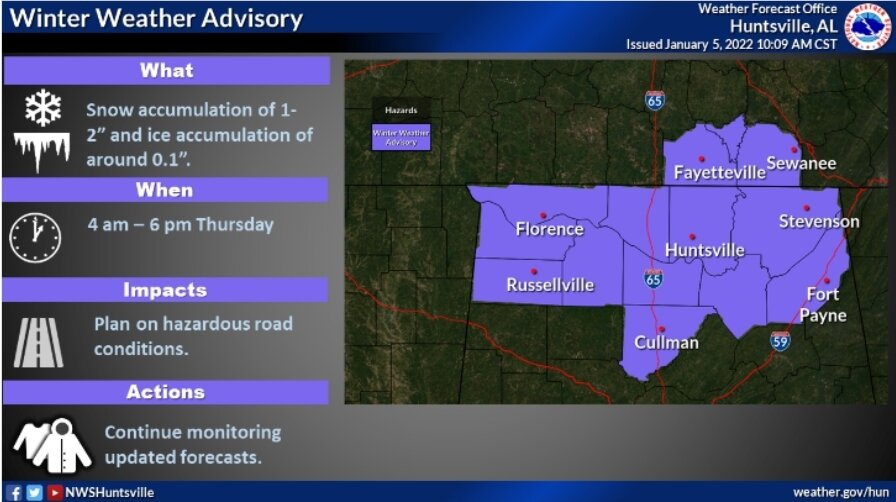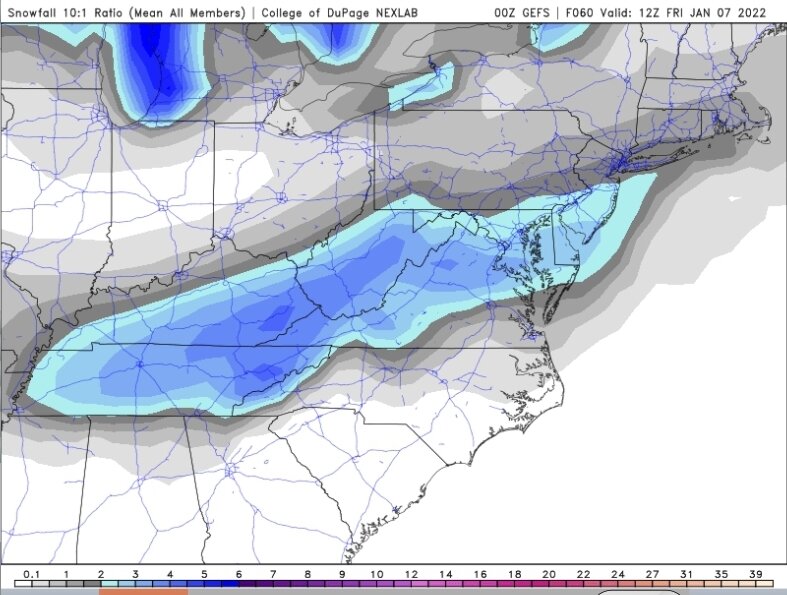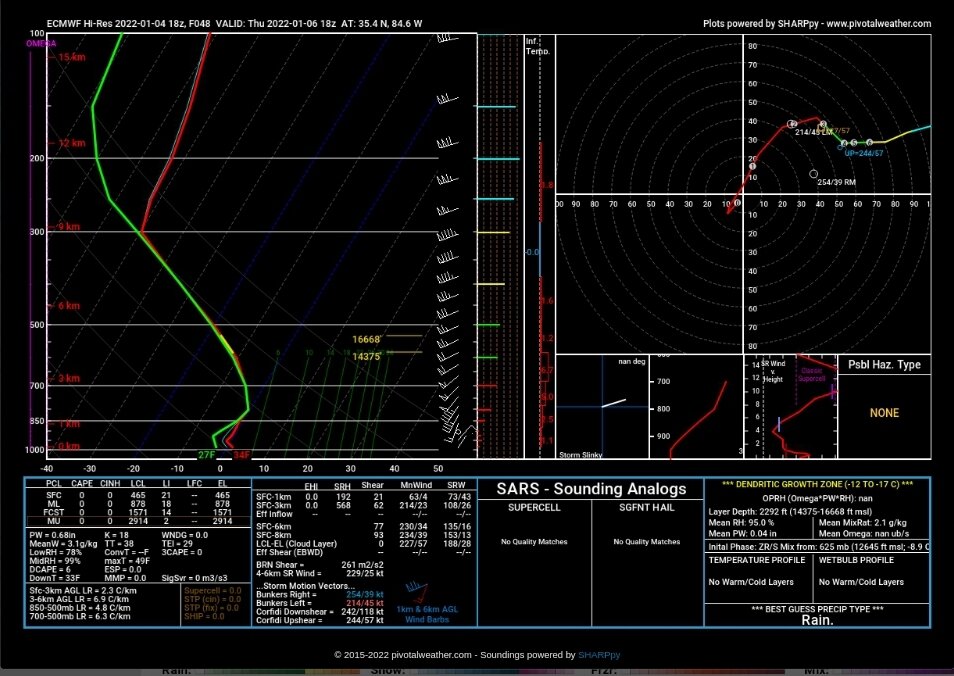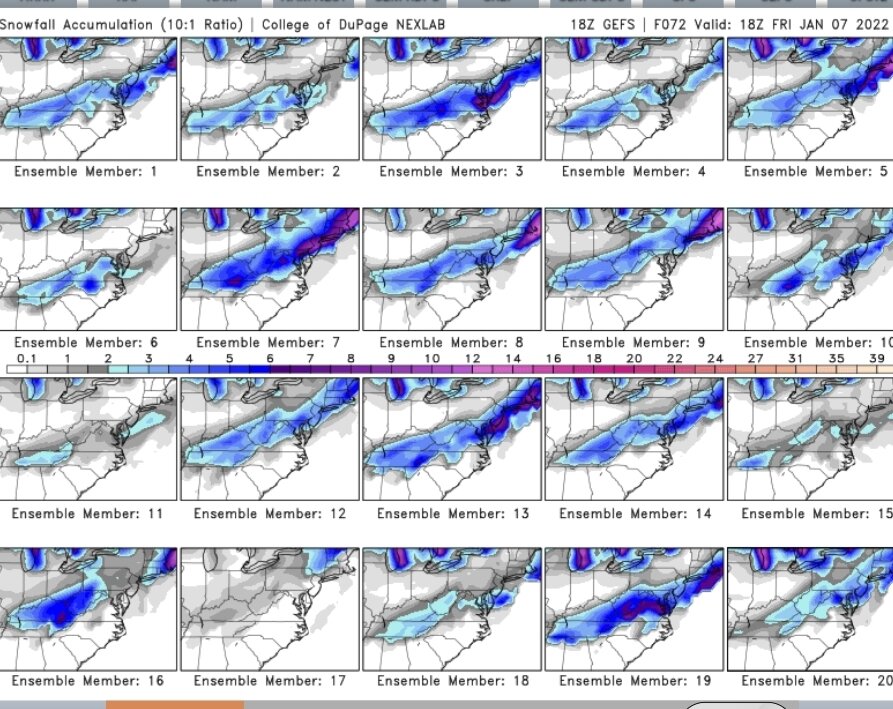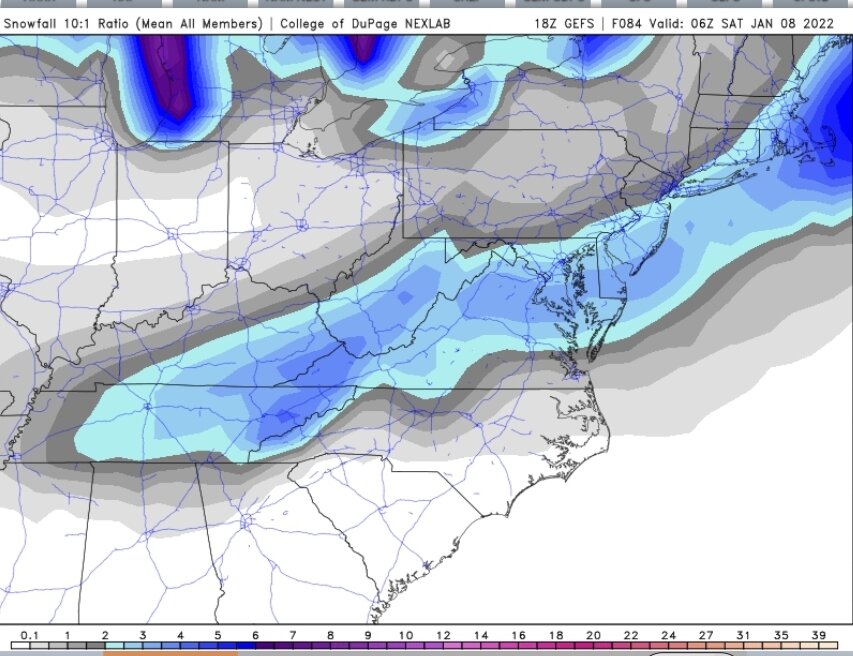
TellicoWx
Members-
Posts
2,289 -
Joined
-
Last visited
Content Type
Profiles
Blogs
Forums
American Weather
Media Demo
Store
Gallery
Everything posted by TellicoWx
-
Here's the 18z NBM...while I don't look at it much, it's been slowly trending toward the GFS throughout the day. Maybe something to keep an eye on.
-
As far as the NAM...rest of the CAMs looked more like GFS/Euro
-
That consistency lead to places like MRX and HUN to pull the WWA south of 40
-
Think 95% of the board would cash out the GFS...have to admire the consistency
-
18z GFS doesn't budge on its track
-
Just noticed HUN went with a WWA
-
If I was MRX, I would hold off until 0z on any changes. But if I had to make a decision now, upgrade WSW to a Warning and WWA Loudon/Blount north. 1" or less south of that in the valley.
-
Agree...its like someone switched the CMC and Ukie.
-
I think since last year that the old bias doesn't apply anymore...Euro seems to lost some of its shine, Ukie has turned into garbage, and somehow the GFS has found a way to be more steady (can remember it holding steady last year while the Euro caved to it). Believe there's a new set of bias that needs figured out. As far as this system, think the pieces are so weak that if you move them 1 county north or south, shear them 3 hrs sooner/later, or even the angle of the press from the northern stream..it has big changes to the final solution. Think the answer is somewhere in the middle.
-
15z vs 9z RAP is a good example of the speed/shearing earlier...6z has a more pronounced 850 while 15z has already begun shearing apart....as they reach the plateau.
-
Biggest thing I see is 1) Globals shear the 850 sooner vs HiRes...less time for the LLJ to nose up the valley. 2) Speed of the 850...some of the HiRes such as NAM has sped it up, while RGEM for example is the slowest. Globals have held steady. Faster solution/ less LLJ influence.
-
Nice mean on the GEFS so far, almost whole state covered by 2" mark
-
Gfs goes south lol
-
3k precip shield looks better than what the snowfall map paints imo
-
Yeah, kinda went off the rails that frame
-
Possible Namming inbound lol
-
Ever slight warm nose (even though the column is very close to that 32° line, it interprets it as rain/mix)
-
Mixing issues
-
18z Euro
-
Have to love Broadcast Mets lol
-
As @John1122noted earlier, a slower solution allows a little more amping. Rob Peter to pay Paul depending on if you are in the NW or SE corners of the state. Shap of TN is what makes a state wide snow that much more difficult.

